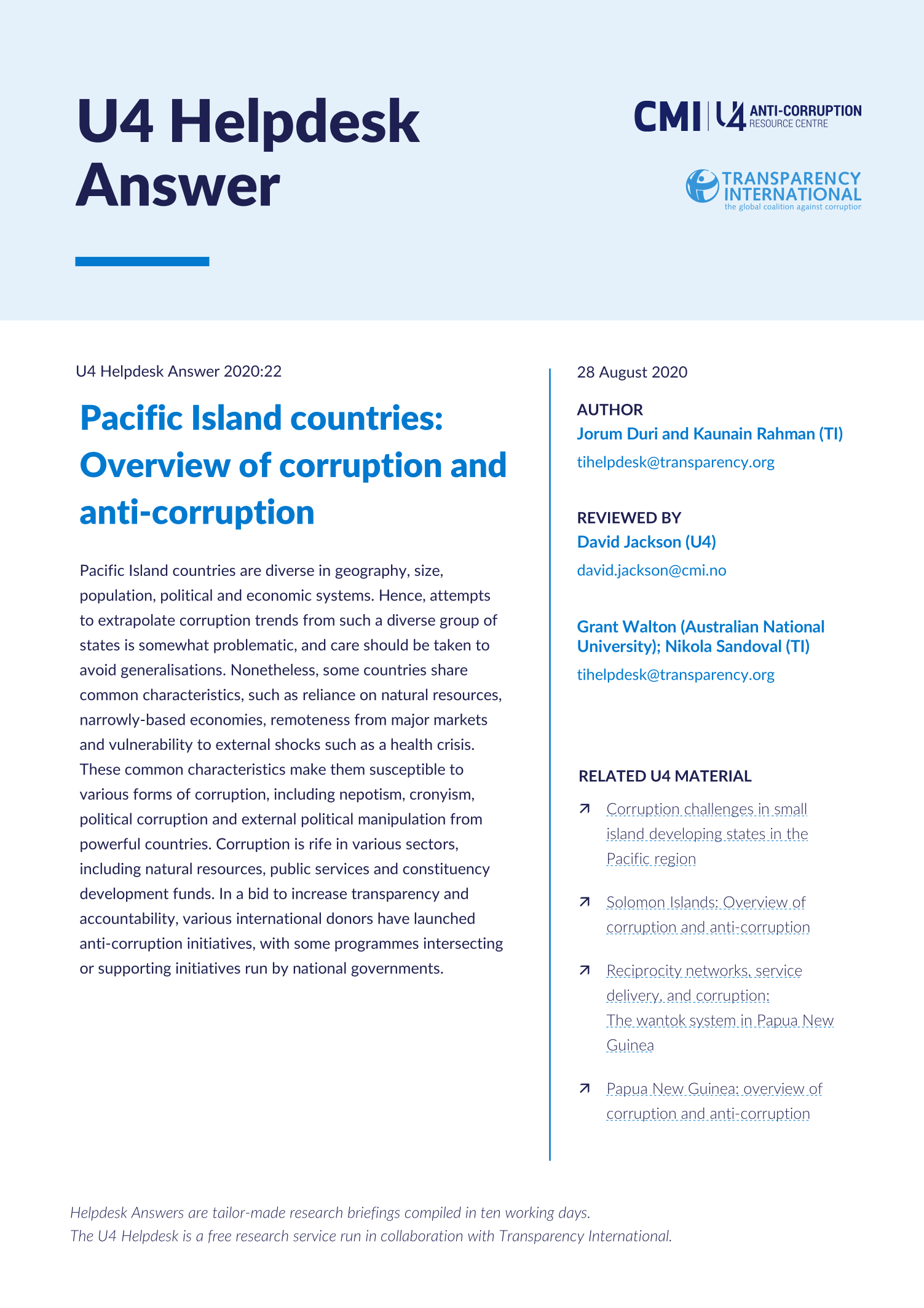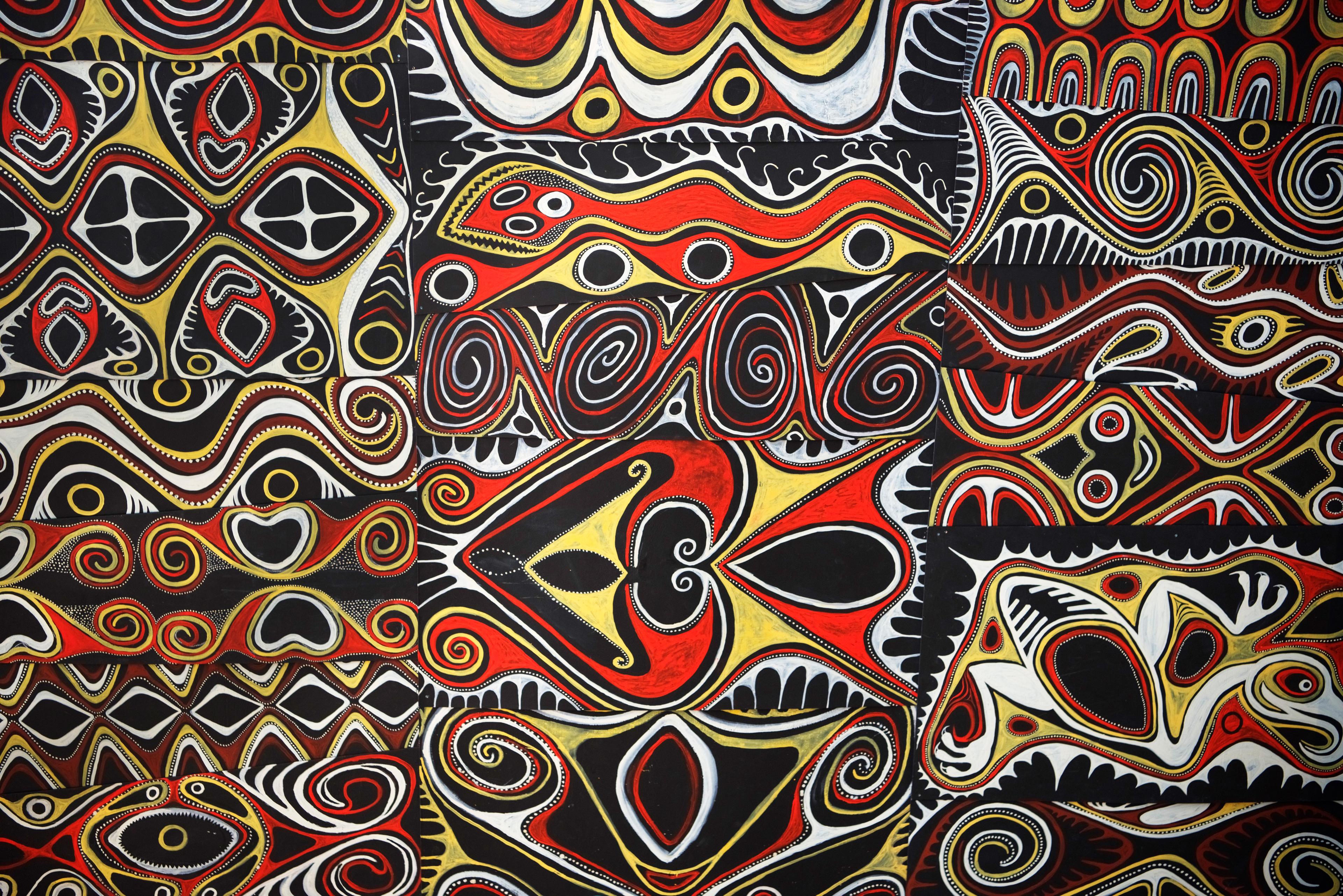Main points
- Some Pacific Island countries do not appear on several governance indicators, making it difficult to fully understand the extent of corruption in the region.
- There is great diversity across the Pacific Island countries, in areas such as geography, size, culture, economies and political systems. However, many countries do share a set of common characteristics that affect governance issues and result in common forms of corruption, including bribery, nepotism, cronyism and political corruption.
- Corruption is rife in various sectors, including natural resource management, public services and constituency development funds.
- All countries have criminalised most corruption offences and have ratified UNCAC, with Tonga becoming the latest member state from the region after its ratification in 2020.
- Anti-corruption programmes by donors usually intersect or support initiatives by national governments.



